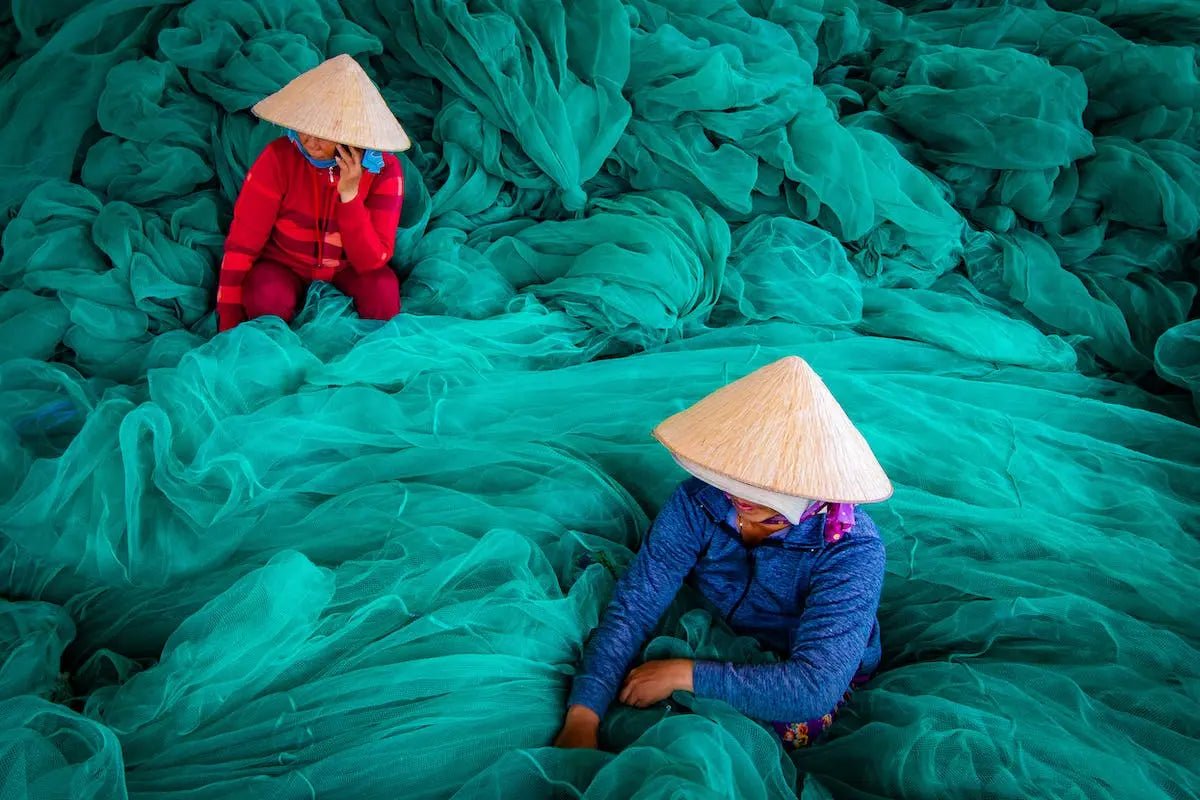How Your Bikini Can Help Save Oceans: A Look into ECONYL® Yarn

What is ECONYL® yarn?
ECONYL® yarn is a type of regenerated nylon that is made from recycled materials such as fishing nets, fabric scraps, and industrial plastic. The process of creating ECONYL® yarn involves collecting these materials, purifying them, and then breaking them down into their original raw form. This raw material is then transformed into nylon yarn, which can be used to create sustainable and eco-friendly products. ECONYL® yarn helps to reduce waste in oceans and landfills, and also decreases the demand for new raw materials, making it a key player in the effort to protect our environment.

Benefits of ECONYL® yarn for the environment
ECONYL® yarn is made from regenerated materials like fishing nets and fabric scraps, helping to reduce plastic waste in oceans. The production of ECONYL® yarn also reduces the global warming impact of nylon by up to 90% compared to the material produced from crude oil. Additionally, using ECONYL® yarn helps to preserve non-renewable resources, making it a sustainable choice for environmentally conscious consumers.
Sustainable swimwear: The rise of eco-friendly fashion
Eco-friendly swimwear is becoming more popular due to a growing awareness of environmental impact. ECONYL® yarn, made from recycled materials such as fishing nets and nylon waste, is at the forefront of sustainable fashion. Brands are utilizing this innovative material to create stylish and durable swimwear, contributing to the reduction of ocean pollution. The rise of eco-friendly fashion is encouraging consumers to make ethical choices while enjoying stylish and sustainable swimwear options.
The impact of traditional swimwear on the oceans
Traditional swimwear is often made of materials like nylon, which contributes to ocean pollution when it is discarded. According to Ocean Conservancy, over 600 types of marine species are affected by the 700,000 tons of fishing gear and 200,000 tons of plastic and packaging material that reach the oceans annually. This includes swimsuits made of traditional materials. When these materials break down, they release harmful chemicals and microplastics into the water, posing a significant threat to marine life and the health of our oceans.
How ECONYL® yarn is made from recycled materials
ECONYL® yarn is made by taking nylon waste from oceans and landfills and turning it into regenerated nylon to create new products. According to the ECONYL® website, the process involves reclaiming and regenerating waste materials such as abandoned fishing nets, fabric scraps, carpet flooring, and industrial plastic from landfills and oceans. These waste materials are then sorted, cleaned, and recycled to produce nylon yarn that can be used to make swimwear, activewear, and other products. By using ECONYL® yarn, your bikini can contribute to reducing waste in oceans and landfills while also supporting sustainable fashion.
Brands using ECONYL® yarn for sustainable bikini production
Many well-known brands are now using ECONYL® yarn for sustainable bikini production. This innovative fabric is created by recycling nylon waste, such as fishing nets and industrial plastic waste, to produce new yarn. Some of the popular brands that have embraced ECONYL® yarn for their sustainable bikini lines include:
- Adidas
- Stella McCartney
- Prada
- Gucci
Choosing bikinis made from ECONYL® yarn supports the reduction of waste in oceans and contributes to a more sustainable fashion industry.
Where to find sustainable bikinis made with ECONYL® yarn
Check out sustainable fashion brands that prioritize eco-friendly materials such as ECONYL® yarn. Look for reputable brands that utilize ECONYL® yarn in their bikini collections, and explore their online stores or physical locations. Some well-known sustainable fashion brands that use ECONYL® yarn for their swimwear include Stella McCartney, Gucci, and Adidas. Additionally, you can find ECONYL® yarn bikinis at specialized sustainable fashion retailers or eco-friendly boutiques both online and locally. Keep in mind that by supporting these brands, you are contributing to reducing plastic waste in oceans and promoting sustainable fashion practices.
Cost comparison between traditional and sustainable bikinis
Sustainable bikinis made from ECONYL® yarn may initially cost more than traditional bikinis, but they offer long-term value. Traditional bikinis are generally cheaper upfront but may wear out quickly due to their materials. Sustainable bikinis, although pricier, tend to last longer and are better for the environment. Therefore, while the upfront cost of sustainable bikinis may be higher, their durability and environmental benefits make them a cost-effective and conscientious choice in the long run.
Tips for caring for sustainable swimwear
To make your sustainable swimwear last longer and keep it looking its best, follow these simple tips:
- Hand wash your swimwear with a mild detergent instead of machine washing it to prevent damage to the fabric.
- Avoid wringing out your swimwear to preserve its shape and elasticity.
- Dry your swimwear flat instead of hanging it to maintain its form.
- Rinse your swimwear in cold water after each use to remove salt, chlorine, and sunscreen residues.
By following these tips, you can extend the life of your sustainable swimwear and contribute to saving the oceans.
Conclusion: The future of sustainable fashion
Sustainable fashion is gaining momentum, and ECONYL® yarn has played a significant role in this movement. As more people become aware of the impact of their fashion choices, ECONYL® yarn offers a solution that aligns with the growing demand for eco-friendly materials. By utilizing this innovative regenerated nylon yarn, fashion brands can contribute to reducing waste and promoting environmental conservation. The future of sustainable fashion looks promising with the continued development and adoption of materials like ECONYL® yarn, paving the way for a more eco-conscious and planet-friendly approach to clothing production.



